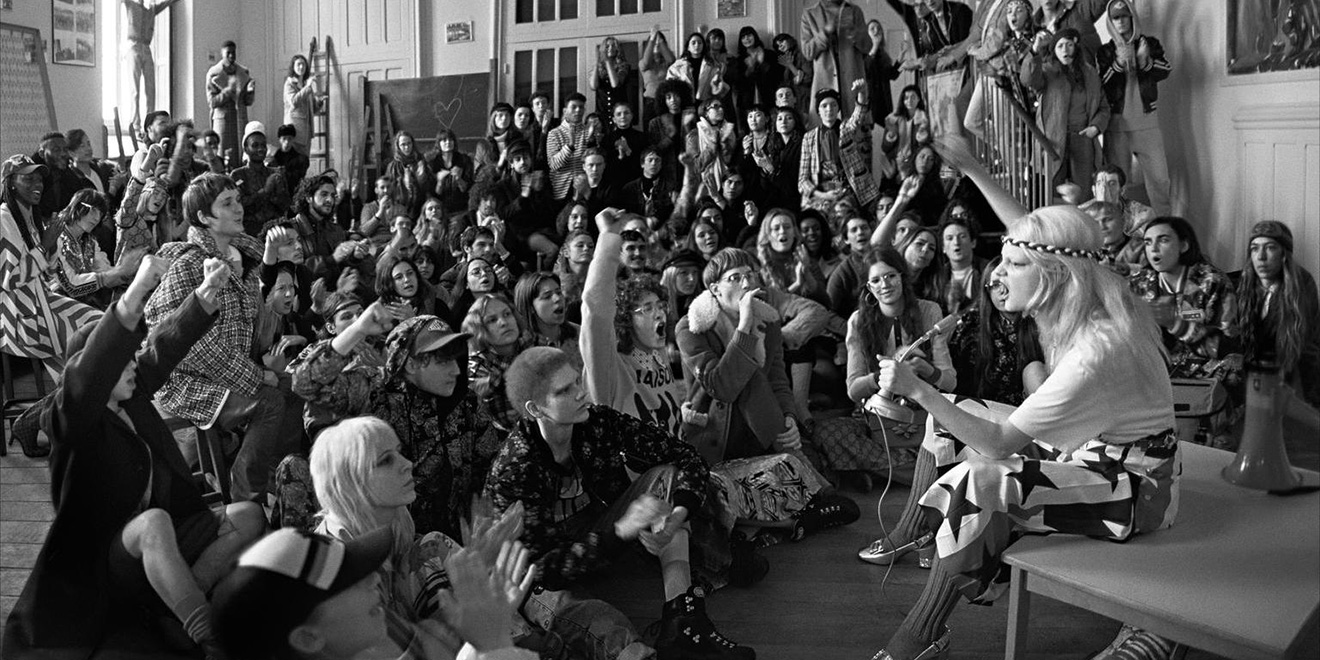
image: Gucci
“Gucci’s ’60s-Inspired Student Protest Ad Misses the Point About Why We’re All Mad.” This is what frequent AdWeek contributor Angela Natividad declared recently in connection with the Italian design house’s Pre-Fall 2018 collection campaign. In doing so, she makes a thought-provoking point.
Shot by creative director Alessandro Michele’s go-to lensman, Glen Luchford, the campaign – entitled, #GucciDansLesRues (“Gucci in the Streets”) – draws its inspiration from the May 1968 protests in France, which French journalist John Lichfield, described as “in its origins, a revolt against the stifling papa-knows-best conservatism, and dullness, of General Charles de Gaulle’s economically booming 1960s France.”
It was, at one level, he wrote, “a catch-up, fast-forward revolution for the right to wear long hair and purple trousers. It began in March, at the new Nanterre University west of Paris, as a demand for the rights of boy and girl students in their late teens and twenties to sleep together.”
Yes, it is here where Gucci’s campaign found its inspiration, “from a period so marked by youthful disgust at capitalism, consumerist culture and American imperialism that it actually compelled President De Gaulle to flee and brought the French economy to a grinding halt,” per Natividad, who notes that Gucci’s rendition is “packed with glamorous, anarchic rage, fist-shaking speeches laced with the free-wheeling sexuality that so often colors our imagination about the ’60s and ’70s.”
Some images, “feel old, others modern,” writes Natividad, “and its fashion sensibility feels both chaotic and chic.” But that does not mean the campaign is not, in her view, without flaw. “While ‘Gucci in the Streets’ is energetic and beautiful,” she states, “its romantic view of the indignance that fueled May ’68 is as dangerous as the way modern conservatives romanticize the ’50s, when the nuclear family was all powerful and white. That mostly white strain can be felt here, too—ethnic minorities are conspicuously relegated to the edges of the frame.”
Building upon the handful of “misfires” by fashion and non-fashion brands, alike – whether it be Pepsi’s tone-deaf “protest” commercial featuring Kendall Jenner or fashion’s push for women’s rights without ever acknowledging the millions of unpaid (and oft-abused) women in the supply chain – “Gucci in the Streets” does not get it quite right, asserts Natividad. The campaign “gloms onto rebellion by using white faces to glamorize it. In this regard, it’s faithful to the aesthetics of the New Wave, but the latter was itself a glamorized rendition of a fraught time.”
“Gucci misses the entire point of what fuels our anger now,” she asserts, “the fact that so many of us are simply not valuable enough to appear front and center of this violent jag in the human histogram … so much of which is about us in the first place.”











